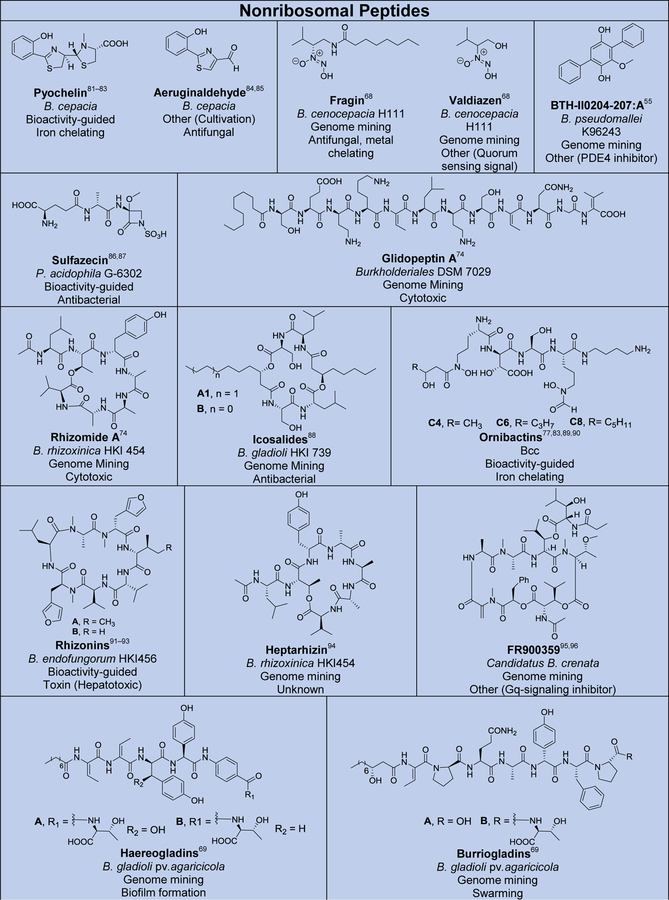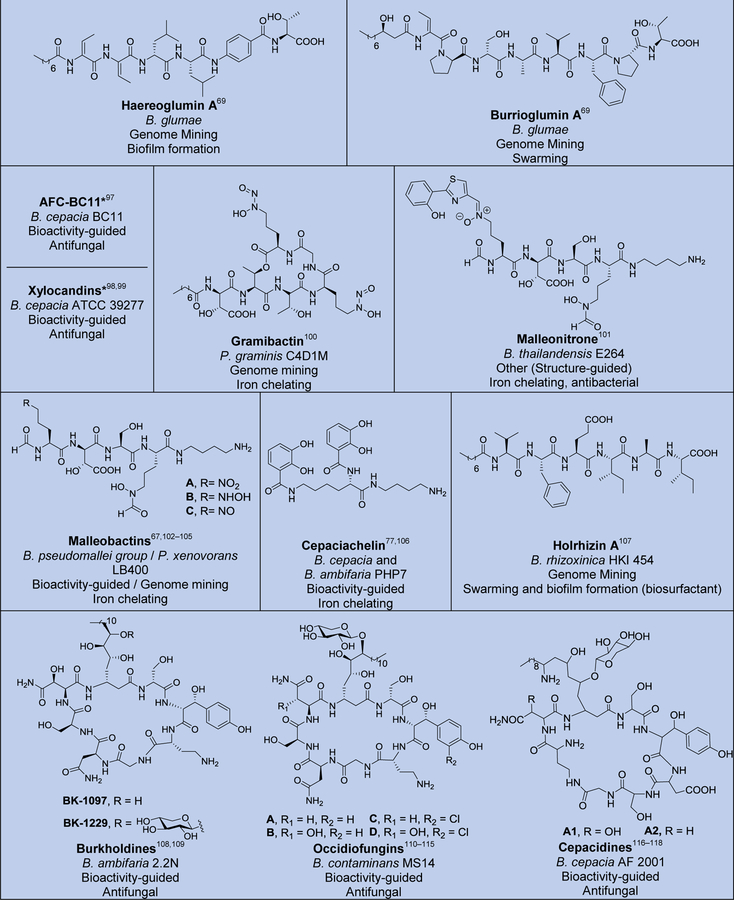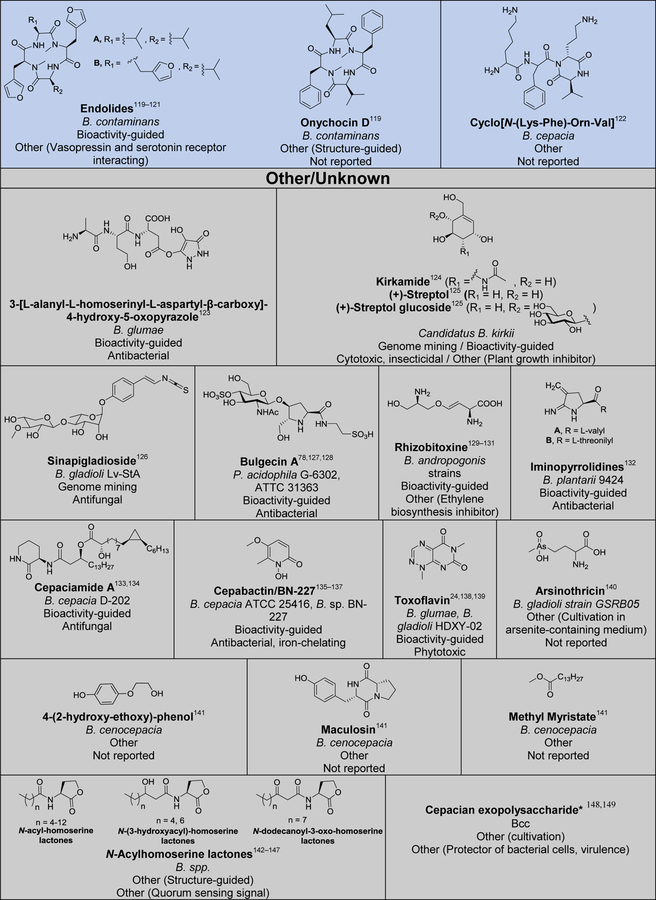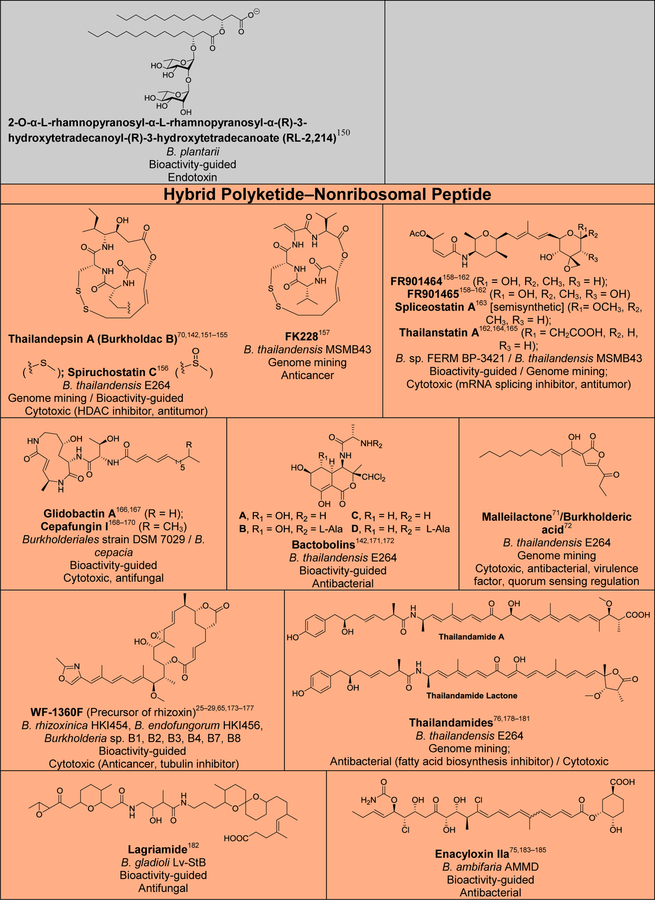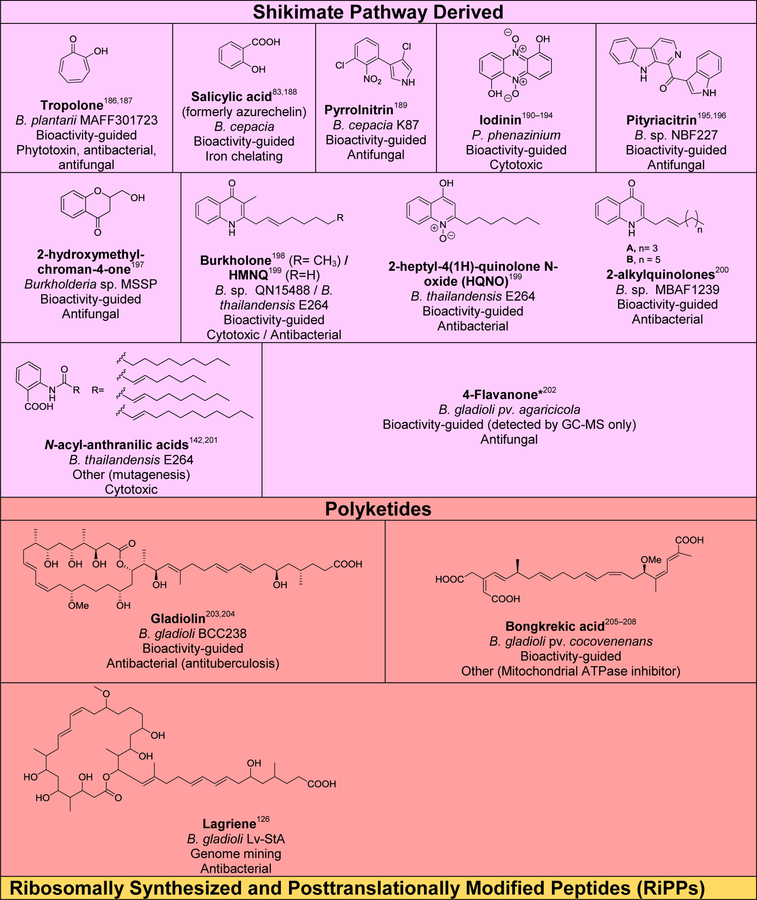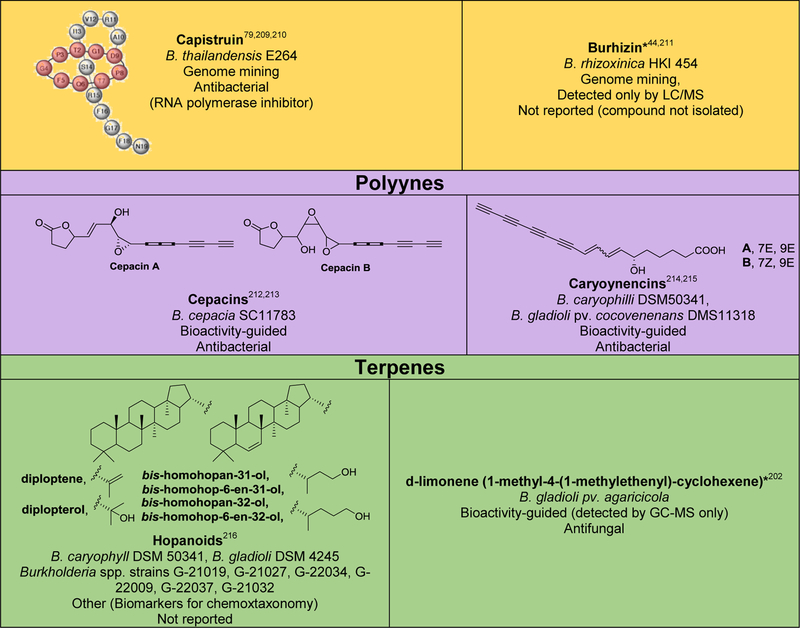Figure 3.
Natural products isolated from Burkholderia sensu lato. Compounds are grouped and color-coded based on biosynthetic class as in Figure 2A. The bacterial source (B., Burkholderia, P., Paraburkholderia), discovery method, reported bioactivity, and references are indicated. For the “other/unknown” category, the biosynthesis is either not yet elucidated or the biosynthetic class does not belong in the categories depicted. In cases where many congeners of a compound class have been isolated, only representative examples are shown. Note that B. rhizoxinica and B. endofungorum as the reported sources of rhizomide A, heptarhizin, holrhizin A, WF-1360F, burhizin, and rhizonins were later revised as P. rhizoxinica and P. endofungorum and most recently transferred to the new genus Mycetohabitans. *Denotes that chemical structure was not fully elucidated or that the compound was detected by mass spectrometry only, in which cases we opted to not show the proposed structure with the exception of N-acylhomoserine lactones.

